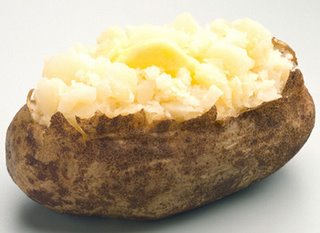Hiya all,
We’re en route to Berkeley, California, where we’ll spend the next two weeks – mostly working, but also meeting old and new friends. We’re very happy about the trip, but also somewhat concerned – my health still is far from perfect and the last thing I need is the jetlag.
And the food.
Say what you may about Israeli politics, behavior, whatever – it wins the food competition with America, hands down. When I moved to Berkeley in 2001, I could hardly bring myself to shop for anything that wasn’t vegetables or fruit – everything seemed processed, fatty, and strange. Getting used to foreign food is always a challenge, but apparently American food is particularly problematic. Many Israelis who have lived abroad (my sample includes lots of grad school students, who also sit and study a lot and therefore have somewhat sedentary lives) find that they gain a lot of weight in America.
Is it possible to live and eat in America without feeling bad and gaining a lot of weight? I maintain it is – at least in California. If you stick to the following principles.
1) Go slow at first. It’s hard enough to adjust to a new place, whether you’re visiting or staying to live there. Get a few familiar foods, just so your stomach doesn’t get as homesick as the rest of you. Being so food-obsessed, I remember how I almost cried with joy when I bought a bag of small, deep green “mediterranean” cucumbers at the overpriced yuppie store. Not all of us can afford shopping at places like that on a regular basis, but sometimes it’s important.
2) At the same time, pay attention to the quality of stuff. What is generally good in one place, doesn’t necessarily have a good equivalent elsewhere. For example, in my second year in America I finally realized that the low fat cheese market was a disappointment in comparison to the stuff in Israel, and shifted to tofu, which was much better. On the other hand, good luck finding a decent veggie burrito in Tel Aviv (and if you have found one, please, let us all know!).
3) Do not eat weird processed fake foods (and I don’t mean these, though they certainly are entertaining). The nature of a globalized, large scale capitalist food market is that it offers a load of new, pre-packaged products for our consumption. There is no need to eat stuff that has an unappetizing, artificial list of ingredients.
4) Exit the supermarket and head to the nearest farmers’ market. The markets have much better and fresher – and often cheaper – produce.
5) Do not be afraid of new vegetables. Before coming to America, I didn’t know of mustard greens, bitter melon, jicama, bok choy, and other wonderful things. In my first year in California, I played a game that you may find fun: Vegetable of the Week. Each week I bought a vegetable I didn’t know, and tried to cook it in various ways. My diet got richer, and my palate was certainly happier!
6) Make use of the advantages of immigration countries! In America, try Asian and Mexican restaurants – it’s best to avoid the sanitized chain versions, and go for the real thing.
7) And, finally, find a way in which, when you’re sad or lonely or homesick, you can have and enjoy an old favorite… a small bag of Bamba does wonders for Israeli kids and kids-at-heart, anywhere in the world…
Safe travels!
(images for this post from: www.shcp.edu/ftp/American%20Food-David%20Foro and www.israelimages.com/medium/17126.jpg)




